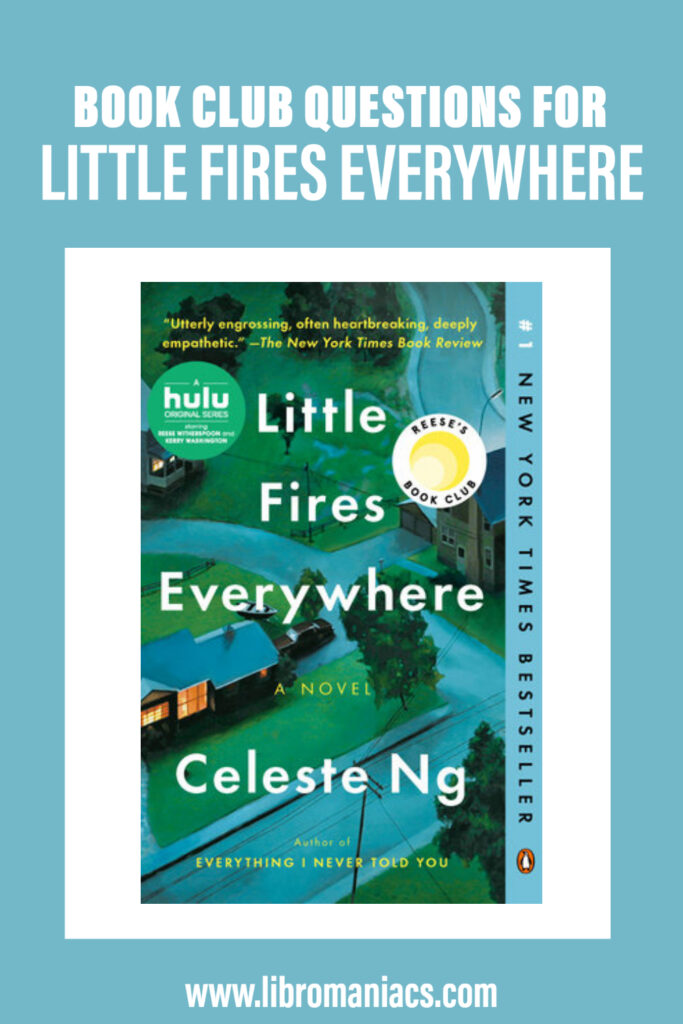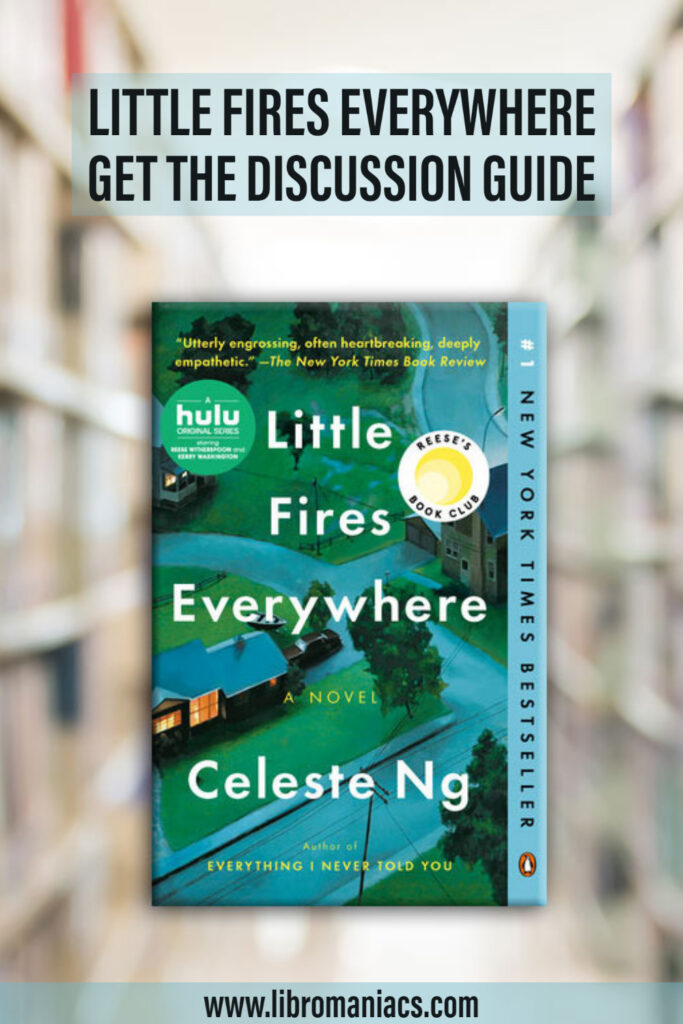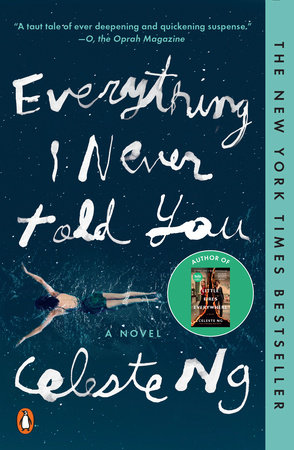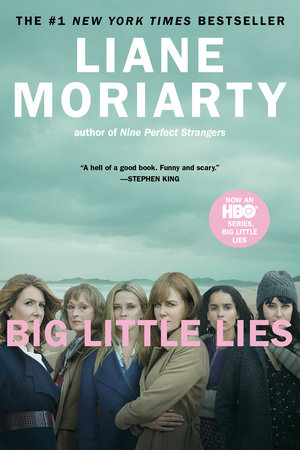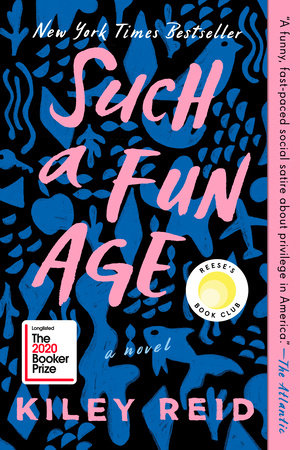Behind the veil of how we present ourselves, there is always more to the story. Celeste Ng’s bestselling novel Little Fires Everywhere reminds us that perfection is a veneer, and that the ideal life, the ideal family, and the ideal neighborhood are all unattainable fantasies.
This novel was an instant book club favorite but it isn’t an easy book to discuss. The story takes the complexities of race, class, and motherhood and confronts the challenging issues head-on–it’s a novel about art, truth, and the concepts of belonging and possession. It is about the human fascination with the “other”, and the hard truth that the best intentions don’t matter if the impact of our actions is dangerous. There are some parts of our past we can’t outrun, no matter how hard we try; there are things in our lives that even a scorched earth restart can’t fix.
These Little Fires Everywhere book club questions will support readers as they wind through the streets of Shaker Heights and sit with some challenging stuff. This Little Fires Everywhere discussion guide also includes a synopsis of the story, selected reviews, and 3 related reads. If your book club also managed to watch the Hulu series, based on the novel, be sure to discuss the questions comparing the book and the show!
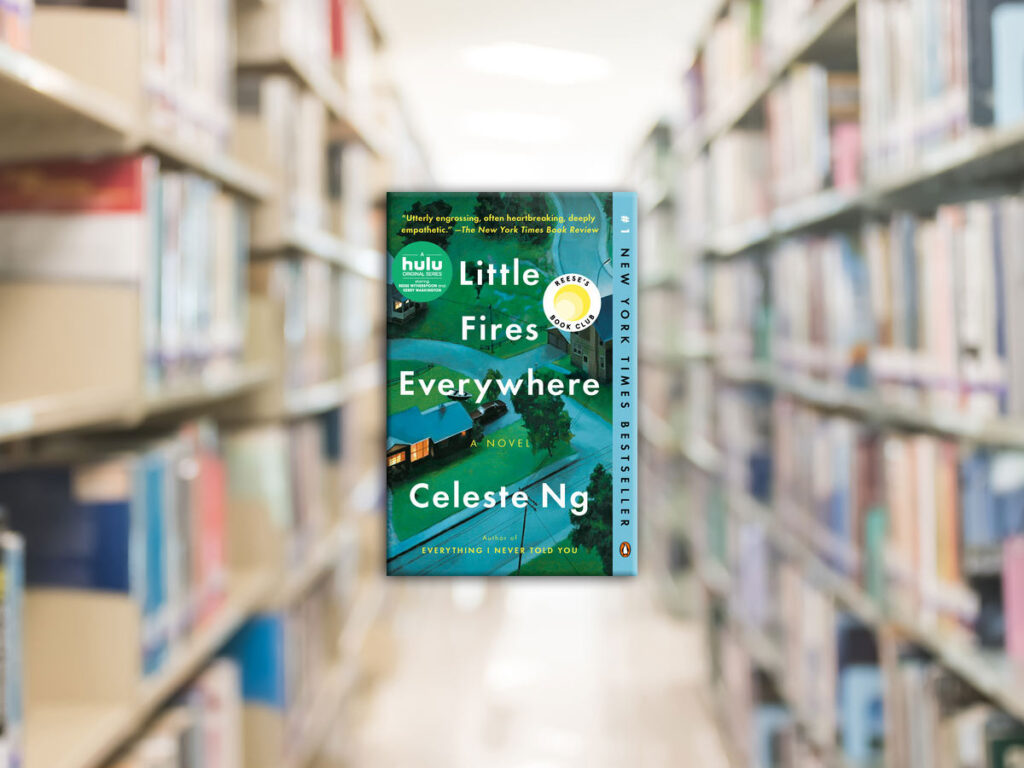
(This article contains affiliate links. This means that if you choose to purchase, I’ll make a small commission.)
Little Fires Everywhere Synopsis
(We always chose to provide the publisher synopsis because we feel that it’s worthwhile to discuss whether the official book description actually squared with your experience of the book.)
Little Fires Everywhere, Celeste Ng
Everyone in Shaker Heights was talking about it that summer: how Isabelle, the last of the Richardson children, had finally gone around the bend and burned the house down.
In Shaker Heights, a placid, progressive suburb of Cleveland, everything is meticulously planned – from the layout of the winding roads, to the colours of the houses, to the successful lives its residents will go on to lead. And no one embodies this spirit more than Elena Richardson, whose guiding principle is playing by the rules.
Enter Mia Warren – an enigmatic artist and single mother- who arrives in this idyllic bubble with her teenage daughter Pearl, and rents a house from the Richardsons. Soon Mia and Pearl become more than just tenants: all four Richardson children are drawn to the mother-daughter pair. But Mia carries with her a mysterious past, and a disregard for the rules that threatens to upend this carefully ordered community.
When old family friends attempt to adopt a Chinese-American baby, a custody battle erupts that dramatically divides the town – and puts Mia and Elena on opposing sides. Suspicious of Mia and her motives, Elena is determined to uncover the secrets in Mia’s past. But her obsession will come at an unexpected and devastating cost
10 Little Fires Everywhere Book Club Questions
These questions have been tailored to this book’s specific reading experience, but if you want more ideas, we also have an article with 101 generic book club questions.
- The first scenes of the book start with a house fire. As Mia says, “new things grow on scorched earth.” While this is true, scientifically, do you think this is true in life? Mia and Pearl are constantly starting over, constantly rebuilding. Have you ever had a scorched earth moment where you had to start over? How did you handle the rebuilding process?
- Racism and classism, both overt and covert, is embedded in every relationship in the novel. The Richardsons and the McCulloughs are, in their own opinions, well-meaning white people. Mrs. Richardson’s choice to rent her property to those who are “deserving”, and the McCullough’s struggle with infertility, lead the reader to sympathize with the actions they take later.
How do you see this type of dynamic play out in your community? Do you know people who mean well, but whose interactions with others of a different race are problematic?
- The trial over baby Mirabelle/May Lin divides the town. Where did you initially stand on the issue? Why did you feel that way, and did your opinion of who should have custody of the baby change over the course of the proceedings? If your feelings evolved, why?
- The novel takes place in the late 1990’s. How does this particular time period play into the story? What is it about the late 90’s that might have influenced the author’s choice of this era?
- In the Hulu series for Little Fires Everywhere, Mia is played by Kerry Washington, a black actress. In the book version, Mia and Pearl’s race was unspecified. Did you assume that Mia and Pearl were black in the book? If Mia was a working-class white woman in the novel, how does that change the way you interpret the story?
- Many of the characters in the novel are consumed and fascinated by someone — Moody with Pearl, Izzy with Mia, and Pearl with Trip. What do these dyads have in common? Think about the people in your life you’ve been drawn to. What was underlying this fascination? What is the difference between a healthy and an unhealthy fascination?
- Motherhood is a central theme throughout the novel. Izzy was born prematurely, and has always felt like an outsider in her family. Her relationship with her mother is fraught, which makes her gravitation towards Mia all the more understandable.
How did Izzy’s early life shape the dynamic between her and her mother? Have you seen similar effects of early-life experiences in your own relationships, either with your own parents or your own children?
- In the novel, Ng chooses to portray Mia as asexual. In the series, Mia is portrayed as a highly sexual being–we witness scenes of her with men in the car while her daughter Pearl sleeps in the back, and we learn that she had a sexual relationship with Pauline Hawthorne (another change from the novel). Why do you think the show writers made this change? Does it change the way you feel about Mia?
- The four Richardson children are very different from each other. Which of the children do you think you were most like as a young person? Which of the children do you most identify with now, as an adult?
- The end of the novel leaves a lot of open questions as to what comes next for all of the families. Will Elena track down Izzy and repair their relationship? Will Mia and Pearl find a stable home? Will Bebe and her baby be tracked down in China? What do you think happened next for the characters? What story would you like to read, if there were a sequel?
Bonus follow-up question:
In the book, it is Izzy alone who starts the fire. In the series, all four children light the fire together after a climactic confrontation between the kids and Elena. Which ending do you prefer, and why? How does the series ending change the way you feel about the Richardson family?
Selected Reviews for Little Fires Everywhere
(Use these selected Goodreads reviews to compare with your own experience of the book. Do you agree or disagree with the reviews?)
“What struck me the most about this journey was the author’s ability to change my entire perspective—meaning, my thoughts and feelings at the beginning of the story were vastly different by the time I turned that final page. Some aspects ended on a sad note, but overall it was still a satisfying ending to what I can only describe as a fully immersive novel.”
“In Little Fires Everywhere, Celeste Ng, weaves an intricate tapestry of such relationships. The resultant story is one of family, loyalty, community, and independence.”
“I think, on the surface, Little Fires Everywhere has served its purpose which (more or less) is showing commentary on whatever issues it is trying to shine a light on. The book is a great conversation starter as it poses many stimulating questions with multifaceted answers. However, so many details of the storyline left me high and dry that all the deeper takeaways I was supposed to be absorbing just went over my head.”
3 Books Like Little Fires Everywhere
Read Ng’s more recent book and use this Our Missing Hearts book guide to discuss it.
Little Fires Burning was a very popular book from Reese’s Book Club. If you like her vibe, check out our guides and book lists featuring Reese’s pics. You can also explore more fraught family relationships with The Dutch House, rich people problems with Pineapple Street, race/class dynamics in The Revisioners, sister dynamics in Hello Beautiful, and Asian-American identity with Crying in H Mart.
If you want both fraught family relationships AND an epic house fire, then check out Malibu Rising by Taylor Jenkins Reid OR Nothing to See Here by Kevin Wilson.
Everything I Never Told You, Celeste Ng
The author’s first novel also puts a mystery (in this case, a suspicious death) at the center of a drama exploring motherhood, secrets, and the expectations of family.
Big Little Lies, Liane Moriarty
If your book club wants another “novel vs. streaming series” discussion, look no further than this female-led story that also explores the messy realities of seemingly perfect neighborhoods filled with seemingly perfect families.
Such a Fun Age, Kiley Reid
Another book club favorite, Kiley Reid’s debut novel wades into the complexities of race, class, and motherhood. When a black babysitter experiences a traumatic confrontation while working for a “well-intentioned” white mother, the impact of the event reverberates throughout the community. This book forces the reader to ask a lot of tough questions about their own biases, and the way society views people of color.
Read it for your next book club and use our Such a Fun Age book club questions to get the conversation going.
Have a listen on Audible. Try audio books for free for 30 days.
This these Little Fires Everywhere book club questions on Pinterest:
